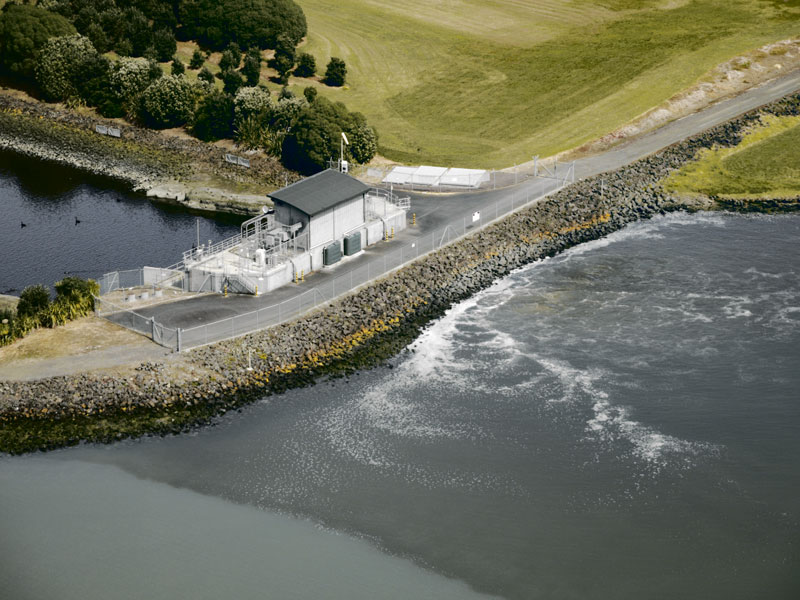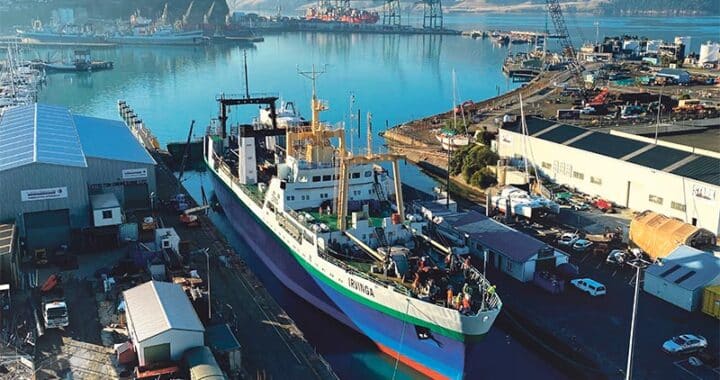State of Manukau Harbour ‘disheartening’
4 min read
An abundance of seaweed has developed in the harbour
The amount of wastewater going into the Manukau Harbour is having a direct effect on its water quality, causing a dramatic decrease in shellfish numbers and changing the way people use the harbour.
According to Jim Jackson, chairman of the Manukau Harbour Restoration Society (MHRS), the Auckland Council has failed to protect the waterway as development and infrastructure has built up around the city and has not addressed how some 300 million litres of treated wastewater that is flushed into the harbour each day has impacted the health of the water and the sealife who call the harbour home.
“Manukau is New Zealand’s second-largest harbour, and it scores pretty badly when it comes to water quality. Our aspiration is how do we change processes to ensure the harbour is able to be used properly by everyone,” says Jackson.
“There is a lot for us to learn about how we can improve the situation for farmers, fishers and recreational users, as well as the waterwater treatment plants.”
The MHRS says over the last 100 years, Manukau Harbour has become the receiving environment for Auckland’s treated and untreated wastewater and reclamations, creating methane gas leachate and serious land stability and settlement issues.
The society was formed in a bid to help improve the water quality of the harbour, ensuring users can catch fish and gather shellfish anywhere in the harbour and eat them safely, and to enable swimmers to swim anywhere in the harbour safely.
Jackson says one of the main issues the MHRS is looking at is the abundance of seaweed that has developed in the harbour, caused by the excessive amount of nutrients in the water possibly due to increased loadings of phosphorous and nitrogen.

“The seaweed has caused a lot of complaints by both commercial and recreational fishermen, who are struggling with their lines and nets getting tangled in the weed,” he says. “It also has a negative impact on the harbour’s shellfish.”
Jackson says research is required to confirm if the significant build-up of seaweed on the harbour is a result of high loadings of phosphorus and nitrogen, and to find out where it is originating from – farming practices or wastewater discharges that end up in the harbour.
Jackson says a research programme needs to commence to ensure the problem doesn’t get worse. “The seaweed that we’re seeing in the Manukau is not yet in the Kaipara, except around Helensville. And I’m not a scientist but it’s pretty interesting that is around where the wastewater plant is,” he adds.
“Unfortunately, Auckland Council, who are responsible for the management of the Manukau, appear not to provide the required leadership as to how these water quality issues are to be addressed. There is a complete lack of direction.”
The MHRS is heavily involved with checking the water quality in the harbour, with volunteers taking samples to validate council research.
“We’re looking at ways this can be managed better to try and reduce the issues we’re seeing, like the seaweed problem,” Jackson says.
However, it’s not just seaweed that is of concern. Jackson says fishermen on the harbour complain that the discharge from the treated wastewater outlet at Puketutu has created a dead zone.
“Saltwater crabs that had been there for 5000 years have disappeared because they have always enjoyed a saltwater environment, not a freshwater environment.“ It smells different, it’s a different temperature.
As a kid, I grew up in Onehunga and used to go scalloping in the harbour. We used to collect our limits in half an hour in knee-high water opposite the Puketutu outlet. Now there are no scallops left because they can’t breathe properly. It’s disheartening,” he says.

“It’s disappointing how we ended up here. Do we need to start a scallop breeding programme? How do we improve fish stocks? These are all key questions that those responsible for the management of the harbour need to consider.”
A review into the Manukau Harbour Forum in 2018 found it was “failing to achieve its vision” and has forced Auckland Council to overhaul the forum. Set up in 2010, the forum was established in response to concerns about the worsening condition of the harbour.
“People should be able to gather shellfish and fish and swim safely without getting sick – pretty simple aspirations,” Jackson says. “For any successful society it is critical that is has a safe drinking water system and a safe sewer disposal system.
Without these core infrastructure issues, society will fail. One only has to look at Havelock North where 5000 people got very sick and four people died because of contaminated drinking water.”
Words by Shannon Williams



